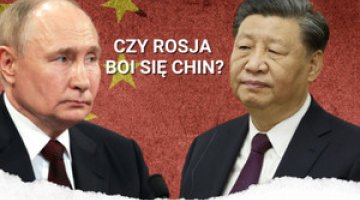Russian nuclear weapons deployed in Belarus: the consequences
On 25 May, the heads of the Russian and Belarusian defence ministries, Sergei Shoigu and Viktar Khrenin, signed an agreement regulating the stationing of Russian tactical nuclear weapons (TNWs) on the territory of Belarus. This is a further step in the implementation of Russian President Vladimir Putin’s announcement back in March that such weapons were to be delivered onto the territory of the Republic of Belarus by 1 July this year. This relocation of the TNWs to Belarus is linked to the earlier handover of Iskander missile systems to the Belarusian army, and expands the range of potential tactical nuclear strikes by Russia to the western part of Ukraine and NATO’s south-eastern flank: Poland and the Baltic states have already been within range of nuclear weapons stationed in the Kaliningrad region for years. It also marks another step towards the integration of Belarusian troops and territory into the Russian military structures. The publicity given to the decision by Moscow and Minsk is part of a psychological operation calculated to make the West yield to nuclear blackmail and reduce its support for Ukraine. From a global perspective, in turn, the move demonstrates of Moscow’s strategic autonomy towards Beijing. For NATO, it represents a challenge of how to adapt its nuclear deterrence strategy to the new political-military situation in Europe.
Chronology of events
Belarus acquired the status of a non-nuclear state in November 1996, when strategic nuclear systems (which had already been under Russian operational control) were withdrawn to Russia. Tactical nuclear warheads had been transferred from Belarus to Russia even earlier, in 1992. Belarus’ non-atomic status had been formally based on the so-called Lisbon Protocol to the 1991 Soviet-American START nuclear arms reduction treaty, which Minsk signed in 1992 and ratified in 1994 and on Belarus’ accession in 1993 to the Treaty on the Non-Proliferation of Nuclear Weapons. The relevant provisions were also introduced into the Belarusian Constitution. Its army, however, retained the means to deliver TNWs, but most of them (mainly Su-24 tactical bombers and 203-mm Pion 2S7 self-propelled cannons) had been withdrawn from service by the beginning of the 2010s. When Russia began its full-scale aggression against Ukraine, only short-range (so-called operational-tactical) Tochka-U ballistic missiles, held by the 465th Missile Brigade in Asipovichi, Mahiliou oblast, remained in service.
The placement of Russian TNWs in Belarus has not come as a surprise. The first indication that the legal basis for such a scenario was being prepared came with the amendment of the Belarusian constitution in March 2022. It removed the passage stating Belarus’ desire to remain a non-nuclear-weapons state. Last August, Alyaksandr Lukashenka admitted that he had asked Putin to take the potential of Belarusian aviation into account as a means for the potential delivery of nuclear weapons. At the same time, Belarusian and Russian media reported on plans to adapt Belarusian Su-25 attack aircraft to carry TNWs. On 25 March this year, the Russian president stated that a facility adapted for the storage of tactical nuclear weapons was to be commissioned in Belarus by 1 July. He indicated that the combat payloads would be delivered via short-range Iskander missile systems, although there were also media reports that airborne nuclear bombs could also be deployed in Belarus. According to Putin, Belarusian personnel were due to begin training in the use of TNWs on 3 April, but as early as the middle of April the Belarusian defence ministry announced that a group of Belarusian pilots had completed training in the use of tactical nuclear weapons. This means that the decision to organise the training must have been taken earlier, probably back in 2022. There is no information about the preparation of Belarusian personnel for other aspects of servicing TNWs, such as how to maintain and use their storage facilities.
On 25 May, the heads of the Russian and Belarusian defence ministries signed an agreement in Minsk regulating how Russian tactical nuclear weapons would be stationed in Belarus. The Belarusian defence minister Viktar Khrenin stated that this was a response to hostile actions by the West. He stressed that the new armaments were intended to strengthen the defence of the Russia-Belarus Union State’s western borders. The head of the Russian defence ministry, Sergei Shoigu, added that NATO’s military actions were aggressive, and stipulated that the dislocation of the nuclear weapons did not mean that they would be handed over to the Belarusian army: control over the TNWs and the decision to use them remained solely with Moscow.
The military aspect
From a military-technical point of view, the placement of TNWs in Belarus is a logical consequence of the transfer of Iskander systems to the Belarusian army in December 2022. Tactical nuclear warheads are assigned to each missile unit of the Russian ground forces and stored in the area of its location (for example, for Iskanders of the 152nd Missile Brigade nuclear warheads are stationed in Kaliningrad oblast). Belarus has received launchers identical to those used by the Russian Armed Forces (each launcher carries two missiles as opposed to launchers in the export version, which carry just one), and their transfer finalises the de facto integration of the Belarusian 465th Missile Brigade into the Russian army’s structures in the western (from Moscow’s perspective) strategic direction. Formally, the unit will remain part of the Ground Forces of the Republic of Belarus, which is in line with the pretence maintained by both sides that the Regional Group of Forces is under joint Russian-Belarusian command – but only as the operator of systems whose use will be decided by the Russian command in the western strategic direction. This applies to any use of the Iskanders, and not just the cases where they are armed with tactical nuclear warheads.
In addition to Iskander systems, the Belarusian Armed Forces have or will have other potential means to deliver TNWs. In recent years, the Belarusian air force has received Su-30SM multi-role combat aircraft from Russia (four aircraft have been handed over so far, out of the contracted 12); these are of a standard identical to that used by the Russian Aerospace Forces, which means that they can be adapted to use tactical nuclear bombs. Belarusian Su-25 attack aircraft will also be provided with analogous capabilities. This will involve their at least partial modernisation, which according to the Belarusian defence is already underway (it should be assumed that no more than 12 aircraft, i.e. one squadron, will be modernised in this way). It is unlikely that Russia will transfer any other TNW carriers to Belarus; even in the case of numerical expansion of the Belarusian army, Russia’s operational needs in the western strategic direction would not justify such a move.
The basing of TNWs in Belarus means that Moscow will send additional forces there to protect the nuclear weapons storage facility. The means of delivery will be manned by Belarusian soldiers, while the TNW depot will be part of the official presence of the Russian Armed Forces in Belarus, like the radar station of the early warning system in Baranavichi, and the Russian Navy’s communications center in Vileyka.
The stationing of TNWs in Belarus increases Russia’s nuclear capability on the European continent. Taking the range of the Iskander systems (at least 500 km) into account, the threat of a tactical nuclear strike from Moscow will now extend to the western part of Ukraine and Slovakia, and partly to the Czech Republic, Hungary, Romania and Moldova. This area had been beyond the capabilities of the Iskanders based in Kaliningrad oblast (the westernmost ‘full-time’ carriers of Russian TNWs), which can cover Poland, the Baltic states and the central part of the Baltic Sea. The transfer of Russian TNWs to Belarus does not imply an increased risk of their use in the war in Ukraine: in the current military situation, this should be ruled out. Instead, it is a further confirmation of the incorporation of Belarus into the Russian military structures.
The political aspect
Regardless of the strictly military implications of the TNWs’ location in Belarus, the use of its territory in ‘nuclear blackmail’ is primarily a psychological operation designed to provoke anti-war sentiments in Western countries. The aim is to lend credibility to Russian threats that the ongoing war could escalate to a level which could justify Russia’s use of nuclear weapons. In this regard the publicity Moscow and Minsk have given to the transfer of the TNWs to Belarus is significant. If it had purely been a question of military needs, they would have been deployed without any publicity, simply as the technical consequence of the prior transfer of Iskander systems to the Belarusian army.
The decision to locate TNWs in Belarus is another example of Russia’s use of the ‘nuclear bogeyman’, this time to heighten tensions in the region just before the NATO summit in Vilnius (11–12 July). The Kremlin intends to exacerbate the hesitation of Western countries to continue their military support for Ukraine, and thus to prompt them to try to (temporarily) freeze the conflict on terms dictated by Moscow. The Russian side is presenting this ostentatious decision as a response to increasing NATO military activity near the borders of the Russia-Belarus Union State, although in reality these actions represent a continuation of Russian nuclear blackmail against Kyiv. At the same time, Moscow’s decision reveals the hypocrisy of Russian diplomacy. For years, it has been accusing the United States of allegedly violating the NPT by maintaining tactical nuclear weapons on the territory of several NATO member states in Europe as part of NATO’s nuclear sharing programme. By contrast Russia, while taking a similar step, is maintaining that this does not violate the treaty. In Moscow’s messaging, the decision to deploy TNWs in Belarus is a direct retaliation to the UK’s disclosed plans to supply Ukraine with tank munitions with depleted uranium cores (although such munitions are not a substitute for nuclear weapons).
The relocation of tactical nuclear weapons on Belarusian soil also has wider implications for the Kremlin’s foreign policy. First and foremost, it can be seen as a demonstration of Moscow’s strategic autonomy towards Beijing, which after Russia’s attack on Ukraine called on the parties to the conflict several times to refrain from threats to use nuclear weapons, and in particular not to deploy nuclear weapons on the territory of third countries. At the same time, this is a signal to both the West and Kyiv that they cannot count on China to put any effective pressure on Russia in this matter. However, this does not mean that the de facto Russian-Chinese alliance, while not free of tensions, is in any way beginning to erode.
Belarus’s resignation from the status of a nuclear-free state is another gesture towards Russia, which has treated Belarus as militarily de facto its own territory. This shows that Minsk’s military policy is formed by Moscow, including on an issue as important as the relocation of Russian nuclear weapons in Belarus. It is thus apparent that Lukashenko’s role in shaping Russian-Belarusian military cooperation has been marginalised. At the same time, the Kremlin has sent a warning to the West and the Belarusian opposition that Lukashenko’s regime is under its special protection, and that any attempts to destabilise the internal situation in Belarus could result in Russian military intervention (Kremlin spokesman Dmitry Peskov declared: “We will defend Belarus”).
Moscow will interpret NATO’s failure to react to the deployment of TNWs in Belarus as yet another indication that the Alliance does not treat the security of the states on the eastern flank on an equal footing with that of the ‘old’ member states, and as confirmation of the Kremlin’s prevailing belief that Russian aggression against Ukraine is not an existential matter for NATO – as it is for the Kremlin. This will embolden Russia to continue its aggressive actions against both Ukraine and the West. The Kremlin’s reading of the Alliance’s response (or lack thereof) is supported in particular by the Alliance’s failure to denounce the NATO–Russia Founding Act, which Moscow is once again violating in both conventional and nuclear terms, and by the Allies’ apparent reluctance to adapt NATO’s nuclear deterrence strategy to the new political-military situation in Europe.





